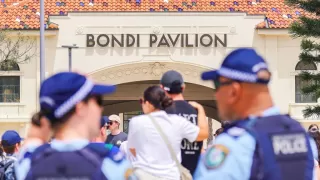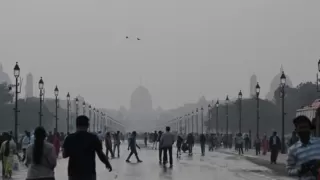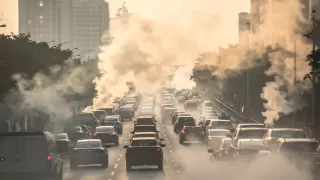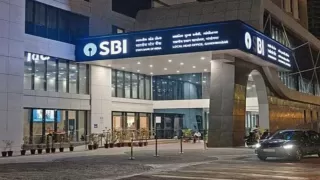Hong Kong’s dense skyline has long been shaped by bamboo scaffolding, a centuries-old building tradition that stands in striking contrast to the city’s modern glass towers. Residents and visitors are familiar with the sight of thin bamboo poles rising hundreds of feet high, creating intricate grids around skyscrapers under repair or construction. The recent deadly fire, however, has renewed scrutiny on this material and its place in a rapidly evolving urban landscape.
The incident that engulfed residential towers shocked citizens across the region. As smoke and flames spread at alarming speed, many began questioning whether the long-cherished bamboo scaffolding still aligns with present-day safety expectations. Although this technique offers affordability, flexibility, and sustainability, concerns have been raised about its flammability—especially during dry seasons. The tragedy has triggered a deeper discussion about whether tradition should give way to more modern alternatives in one of the world’s most advanced cities.
While investigators work to determine the factors that contributed to the destructive blaze, a broader conversation is unfolding. Experts, officials, and residents are debating the future of bamboo scaffolding, weighing cultural heritage against public safety, and examining whether regulatory updates can adequately address emerging risks. The event has placed a spotlight on construction practices, safety standards, and the delicate balance between preserving history and ensuring resilience.
The Enduring Presence of Bamboo Scaffolding
Bamboo scaffolding has been used in Hong Kong for centuries, tracing its origins back to ancient dynasties. Its lightweight structure and impressive strength made it a favored choice for builders long before modern materials became available. Even today, many of Hong Kong’s tallest landmarks have incorporated bamboo during construction or renovation, showcasing its versatility and surprising load-bearing capacity.
Walking through the streets of Hong Kong, it is nearly impossible to miss buildings wrapped in bamboo. Workers skilled in this craft, often called “spidermen,” move with remarkable agility across networks of poles tied together with precision. The technique remains both a cultural symbol and a practical solution, valued for its eco-friendliness and ability to withstand wind forces when properly installed.
Safety Concerns and Fire Risks
Despite its advantages, bamboo’s flammable nature has prompted renewed concern. Experts have noted that in dry conditions, the likelihood of ignition increases significantly. When a fire does start, the vertical alignment of scaffolding can create a rapid upward path for flames—a phenomenon that played a role in the recent high-rise disaster.
In addition to the bamboo itself, other materials commonly used during construction—such as nylon nets, plastic covers, protective sheets, and insulation boards—can pose risks if they fail to meet fire-retardant standards. Investigations have revealed that some materials present at the site did not align with expected safety requirements, raising questions about oversight and compliance.
Regulations and Compliance
Hong Kong maintains detailed guidelines for scaffolding projects, outlining requirements for the thickness, spacing, and strength of bamboo poles used. Tying materials such as nylon strips must meet minimum durability standards, and the arrangement of poles is carefully regulated. Beyond the structure itself, protective coverings must also adhere to fire-retardant specifications to prevent external flames from spreading rapidly.
Authorities have reaffirmed their commitment to enforcing these rules. In the wake of recent events, a task force was established to evaluate whether the building’s exterior materials complied with established safety codes. Officials emphasized that accountability would be pursued if any wrongdoing or negligence was identified.
A Shift Toward Modern Alternatives
Earlier this year, Hong Kong’s Development Bureau introduced new guidelines requiring half of all public projects from March onward to adopt metal scaffolding. The shift is aimed at improving worker safety and aligning the city with advanced global construction practices. While not an outright ban, the policy signals a gradual transition away from traditional bamboo for major developments.
This move followed a series of incidents in which buildings covered in scaffolding caught fire. Although such occurrences remain relatively rare, they have highlighted vulnerabilities—especially in dense districts where structures stand only meters apart.
Public Debate and Cultural Significance
The decision to limit bamboo scaffolding has sparked mixed reactions. Many residents view the practice as a cultural treasure that reflects Hong Kong’s identity. For decades, bamboo has shaped both permanent structures and temporary installations, such as Cantonese opera theaters that rely on bamboo frames for rapid assembly and dismantling.
Some construction workers and trade unions have defended bamboo scaffolding, arguing that when installed correctly under rigorous standards, it is both safe and reliable. They caution against assumptions that modern materials are automatically superior, emphasizing that proper maintenance and compliance play a larger role in preventing disasters.
Global Reactions and Comparisons
The international community has expressed surprise that a world-leading financial hub still relies on bamboo for large-scale construction. Online discussions have compared Hong Kong’s practices with those of mainland China, where bamboo scaffolding was banned in 2022. The contrast has sparked questions about modernization and heritage preservation.
Observers note, however, that Hong Kong’s unique landscape, narrow spaces, and longstanding reliance on bamboo have shaped construction norms differently. Many argue that the city must find its own balance between safety, efficiency, and cultural continuity.
Understanding the Disaster’s Scale
Experts analyzing the recent fire have pointed out that the initial source of ignition may be less important than the environmental factors that allowed flames to spread so quickly. In modern high-rise design, isolated fires are typically manageable. However, when external elements such as scaffolding and flammable coverings create pathways for expansion, even a small spark can escalate into a large-scale catastrophe.
Fire engineers have drawn parallels with other global incidents involving rapid external fire spread. These comparisons underline the importance of ensuring that exterior materials and temporary construction structures meet robust fire-resistant standards.
The Road Ahead
As investigations continue, Hong Kong faces a pivotal moment in defining its construction future. Policymakers must weigh the need for modern safety measures against the cultural value of an age-old craft. Builders and safety experts are calling for updated regulations, improved inspections, and stricter enforcement to prevent similar tragedies.
Whether bamboo scaffolding remains a widespread practice or gradually becomes a niche craft, the dialogue it has sparked highlights the complexities of preserving tradition in a city that constantly reinvents itself. The recent fire has become a catalyst for examining long-standing habits and taking decisive steps toward a safer, more resilient urban environment.
Key Factors in the Ongoing Investigation
- Compliance of scaffolding materials with fire-retardant standards
- Condition and legality of protective nets, sheets, and insulation boards
- Role of dry seasonal weather in contributing to the fire’s rapid spread
- Adherence to construction guidelines at the renovation site
- Potential impact of bamboo’s vertical configuration on flame movement
Conclusion
The deadly fire has exposed vulnerabilities in construction safety that extend beyond tradition or material preference. It has prompted Hong Kong to re-evaluate how ancient techniques fit within a modern city’s safety framework. By addressing gaps in regulation, ensuring strict compliance, and recognizing both the strengths and limitations of bamboo scaffolding, the city can move toward a safer future while honoring the craftsmanship that helped build its iconic skyline.
Also Read: Delhi Pollution Eases as GRAP-III Revoked, New Curbs Begin























